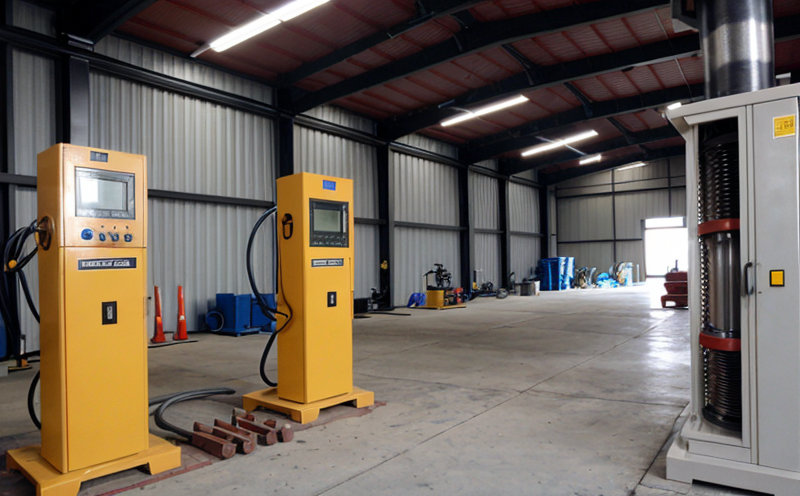ASTM D4577 Flat Crush Test for Cardboard
The ASTM D4577 flat crush test is a widely used method to evaluate the mechanical strength and compressive properties of cardboard. This test is essential in quality assurance processes, ensuring that packaging materials can withstand the stresses encountered during shipping, handling, and storage.
Cardboard, particularly corrugated fiberboard, plays a crucial role in protecting products from damage due to external forces such as pressure, impact, and compression. The ASTM D4577 test provides critical data on how these materials behave under compressive loads, which is vital for optimizing packaging design and ensuring compliance with industry standards.
The test involves applying controlled force perpendicular to the plane of the cardboard sample until it crushes. This method allows quality managers and R&D engineers to assess the material's integrity and determine its suitability for specific applications. The results help in making informed decisions about packaging improvements, cost optimization, and regulatory compliance.
Compliance officers can use this information to ensure that their products meet legal requirements and industry standards, such as those set by ASTM D4577 itself. Understanding the test parameters and specimen preparation is crucial for accurate testing results, which in turn support effective quality control processes.
The flat crush test is particularly important for industries reliant on cardboard packaging, including food and beverage companies, electronics manufacturers, and logistics firms. By ensuring that their packaging meets the necessary strength criteria, these organizations can enhance product safety and reduce the risk of damage during transit.
The ASTM D4577 standard specifies the dimensions and weight of the test specimen, the force application rate, and the method for measuring crush resistance. These parameters are critical to obtaining accurate and comparable results across different laboratories.
Applied Standards
The ASTM D4577 flat crush test is part of a series of standards that focus on evaluating the compressive strength of paperboard, corrugated fiberboard, and similar materials. This particular standard provides detailed procedures for conducting the flat crush test, ensuring consistency and reliability in testing results.
The standard outlines specific requirements for specimen preparation, including the dimensions (typically 150 mm x 76 mm) and weight of the cardboard sample. It also specifies the force application rate (20 mm/min) and the method for measuring the crush resistance by determining the maximum load in Newtons.
ASTM D4577 is widely recognized as one of the most effective methods for assessing the compressive strength of corrugated fiberboard, which is commonly used in packaging applications. The standard ensures that testing laboratories follow consistent procedures, leading to more accurate and comparable results.
Compliance with ASTM D4577 is important for several reasons:
- To ensure product quality meets industry standards
- To maintain consistency in packaging design across different applications
- To reduce the risk of damage during transportation and storage
- To comply with regulatory requirements set by various industries
Scope and Methodology
The scope of the ASTM D4577 flat crush test is to evaluate the compressive strength of cardboard, specifically corrugated fiberboard. This method provides a standardized approach for testing the ability of the material to withstand applied pressure without crushing.
The methodology involves several key steps:
- Specimen Preparation: Cut the specimen to the specified dimensions (150 mm x 76 mm) and ensure it is dry and free from defects. The weight of the sample should be within a predefined range.
- Force Application: Place the specimen in the testing machine with the corrugated surface facing upwards. Apply force at a constant rate (20 mm/min).
- Data Collection: Record the maximum load before crushing occurs, measured in Newtons. This value represents the compressive strength of the cardboard.
The test setup typically includes a compression testing machine with appropriate fixtures to hold the specimen securely during the test. The force application is controlled by a motorized system that ensures precise and consistent loading.
Accurate measurement of crush resistance is critical for obtaining reliable results. This can be achieved using high-precision load cells integrated into the testing machine. The data collected from these sensors provides detailed insights into the material's behavior under compressive stress.
Use Cases and Application Examples
| Use Case | Description |
|---|---|
| Product Safety | Evaluating the ability of cardboard to protect products from damage during transit. |
| Cost Optimization | Determining the optimal thickness and type of cardboard for packaging based on compressive strength requirements. |
| Regulatory Compliance | Ensuring that packaging meets industry standards like ASTM D4577 to avoid legal issues. |
| Design Optimization | Improving the design of corrugated fiberboard by understanding its compressive properties under different loading conditions. |
| Packaging Efficiency | Evaluating the efficiency of cardboard packaging in terms of weight and volume while maintaining structural integrity. |
| Environmental Impact Assessment | Determining the sustainability aspects by evaluating how much force is required to crush the material, which can inform recycling practices. |
| Quality Control | Ensuring that each batch of corrugated fiberboard meets the necessary strength criteria for packaging applications. |
| R&D Innovations | Exploring new materials and designs by testing their compressive properties against established standards like ASTM D4577. |
The use of ASTM D4577 flat crush test is extensive across various industries, including food packaging, electronics manufacturing, and logistics. These sectors rely on robust packaging solutions to protect products from damage during transportation and storage. By leveraging this test method, companies can ensure that their packaging meets the necessary strength criteria, thereby enhancing product safety and reducing the risk of damage.
The results obtained from this test are also crucial for regulatory compliance, design optimization, cost reduction, and sustainability assessments. Through continuous testing and refinement, industries can improve the overall quality and performance of their packaging solutions.





